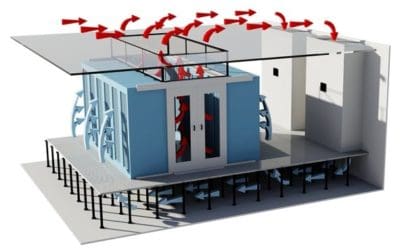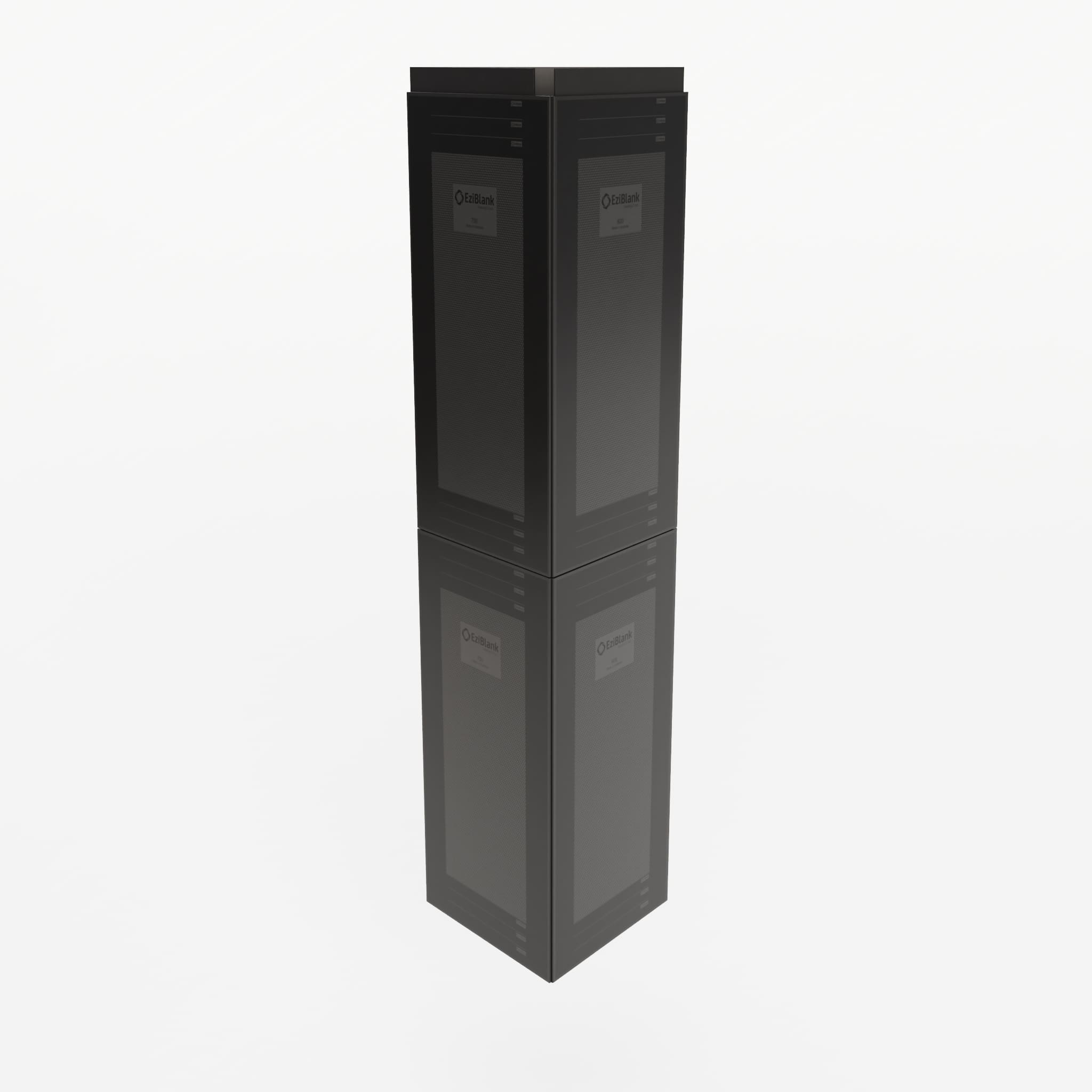Choosing between colocation and cloud data centers has become a defining decision in modern IT architecture. As enterprises face pressure to support artificial intelligence (AI), remote-first workforces, and latency-sensitive edge computing, infrastructure strategy now determines agility, security, and cost efficiency.
Colocation and cloud are not mutually exclusive. Each has strengths and weaknesses, depending on workload demands, compliance obligations, and future growth plans. Understanding the difference is critical to aligning operational needs with physical and virtual resources.
At EziBlank, we optimise airflow and energy efficiency across both models. Whether your infrastructure resides in a hyperscale cloud facility or a private colocation cage, our blanking panels, modular walls, and airflow floor tiles reduce thermal waste and improve Power Usage Effectiveness (PUE).
Explore how airflow works inside a server to understand why this matters across both architectures.
What Is a Cloud Data Center?
A cloud data center is a virtualized infrastructure where compute, storage, and network resources are delivered remotely via internet-based platforms. Cloud data centers fall into three models:
- Public Cloud: Services like AWS, Azure, or Google Cloud offer shared infrastructure for multiple clients.
- Private Cloud: Dedicated cloud environments hosted on-premises or within colocation facilities.
- Hybrid Cloud: A combination of both, enabling greater flexibility, control, and workload segmentation.
Cloud data centers are characterised by:
- Scalability: Instantly adjust resources based on usage.
- Low CapEx: No hardware ownership costs.
- Managed Infrastructure: Vendors maintain power, cooling, and physical security.
Despite the operational ease, cloud infrastructure offers limited physical control. It often introduces complex security frameworks, especially in regulated sectors.
What Is a Colocation Data Center?
A colocation data center is a third-party facility where businesses lease physical space for their own servers, storage, and networking equipment.
In a colocation model:
- The client owns and manages the IT hardware.
- The colocation provider delivers space, power, cooling, and network connectivity.
- Physical access and configuration remain under the client’s control.
This model is often preferred by:
- Regulated industries (finance, healthcare) require data sovereignty.
- Latency-sensitive applications that demand geographic proximity.
- Organisations seeking long-term cost optimisation through hardware amortisation.
EziBlank airflow systems integrate seamlessly within colocation environments. Our blanking panels and high-airflow floor tiles maintain cold aisle integrity and reduce cooling loads in customer-owned racks, enabling reliable thermal performance across mixed workloads.
Products like our 19” 6RU Universal Blanking Panel and EZ-55 High Airflow Floor Tile are commonly deployed in colocation cages to reduce hot air recirculation and ensure cooling efficiency across mixed-density environments.
See our modular blanking panels tailored for 19″, 21″, and 23″ racks.
Comparing Cost Models: CapEx vs. OpEx
The choice between colocation and cloud data centers often hinges on how and when you want to spend your money. The financial model behind each is fundamentally different, and this impacts everything from budgeting cycles to infrastructure scalability.
Cloud: Operational Expense (OpEx)
Cloud services operate on a pay-as-you-go model. You avoid large upfront hardware investments, instead paying monthly or annually based on usage. This suits startups, variable workloads, and rapidly scaling applications. However, for sustained or heavy usage, cloud costs can grow exponentially, especially with egress fees, licensing, and autoscaling.
Cloud Cost Highlights:
- Minimal upfront costs
- Dynamic billing based on usage
- Hidden costs for bandwidth, IOPS, and storage tiers
- Ideal for short-term flexibility, not long-term predictability
Colocation: Capital Expenditure (CapEx)
Colocation involves a heavier upfront investment, servers, racks, storage, and initial setup, but typically results in lower long-term operational costs. Once hardware is purchased and deployed, businesses benefit from predictable monthly fees for space, power, and cooling. It’s particularly efficient for stable, high-throughput workloads.
Colocation Cost Highlights:
- Higher upfront hardware and setup costs
- Predictable monthly facility fees
- Greater control over TCO (Total Cost of Ownership)
- Economical at scale or for long-term use
If you’ve already invested in optimising airflow to reduce data center cooling costs, colocation allows you to retain those physical efficiency gains. For instance, implementing blanking panels and brush solutions across your racks helps prevent hot air recirculation, improving thermal performance without additional cooling expense.
Review our Data Center Cooling Best Practices for cost-saving strategies used in colocated deployments.
Hybrid Approaches: Best of Both Worlds?
For many organisations, it’s not about choosing either cloud or colocation, it’s about strategically combining both. A hybrid model allows enterprises to place different workloads in different environments based on their unique requirements.
For example, AI and machine learning workflows, which demand enormous compute resources during training, benefit from the elastic scalability of the cloud. Meanwhile, sensitive data warehousing or latency-sensitive applications may be better suited to colocation environments where physical control and compliance are essential.
This flexible approach empowers IT teams to build for performance, cost-efficiency, and security, without compromise.
Businesses adopting hybrid strategies should consider optimising airflow across both environments. Whether deploying equipment in a cloud-connected on-prem facility or a third-party colocation site, thermal management matters. Explore our Server Airflow Guide to understand airflow zones and optimal cooling strategies, even in mixed deployments.
Also, hybrid environments benefit greatly from modular infrastructure upgrades. Efficient airflow planning, including containment and blanking, helps offset the extra heat load from diverse compute demands. Our Cooling Best Practices offer guidance for managing hybrid racks with varied densities and thermal zones.
Airflow & Cooling: Why It Matters Regardless of Model
Whether you manage your infrastructure in the cloud, colocation, or both, inefficient cooling still costs you.
In colocation facilities, inefficient airflow means wasted energy and rising PUE (Power Usage Effectiveness). In cloud setups, although providers handle the infrastructure, tenants ultimately pay for over-provisioned cooling baked into the service cost, meaning poor thermal design indirectly affects your bottom line.
Read our guide on How Airflow Works Inside a Server to understand how hot and cold aisles interact, and why strategic airflow containment is critical regardless of the environment.
Key Solutions for Both Models:
- Blanking Panels: Block empty rack spaces to prevent hot air recirculation. Our popular 6RU Modular Blanking Panel is a go-to for data center operators standardising thermal containment.
- Containment Systems: Use hot/cold aisle containment to isolate thermal zones and avoid mixing intake and exhaust air.
- Raised Floor Cooling: Deploy directional airflow tiles to guide cold air precisely where it’s needed. The EZ-55 High Airflow Tile is ideal for APAC facilities with underfloor distribution.
EziBlank’s airflow solutions are compatible with both cloud cages and colocation racks, designed for plug-and-play integration, rapid deployment, and global compatibility.
Use Cases: When to Choose Each
When evaluating your infrastructure path, it helps to align your operational needs with the core strengths of each model. Here’s a quick comparison based on common scenarios:
| Use Case | Best Fit |
| Startups scaling fast | Cloud |
| Government with strict compliance | Colocation |
| AI/ML workloads | Hybrid |
| On-prem repatriation | Colocation |
| Real-time apps (low latency) | Colocation |
| Backup / Disaster Recovery | Cloud |
Cloud provides agility, but can become costly over time. Colocation delivers control, but requires upfront planning. Hybrid strategies combine the strengths of both, especially when backed by consistent airflow management and adaptable infrastructure.
Costs Over Time: TCO Breakdown
Total Cost of Ownership (TCO) depends on both initial investment and ongoing operational efficiency. Cloud environments offer low initial CapEx with scalable monthly OpEx. However, costs can escalate quickly due to data transfer fees, over-provisioning, and underutilised resources.
Colocation requires upfront infrastructure costs, such as hardware procurement and rack installation, but typically delivers lower long-term OpEx when managed properly.
Both models share one hidden variable that impacts cost the most over time: cooling inefficiency. Poor airflow planning results in higher energy bills, shorter equipment lifespan, and unplanned downtime, all of which erode ROI.
Read: The Cost of Poor Airflow to understand how minor gaps in airflow strategy can lead to major financial loss, in both colocation cages and cloud cages.
Checklist: What to Ask Before You Decide
Choosing between colocation and cloud (or a hybrid) requires strategic evaluation. Use this checklist to guide the decision:
- Infrastructure Flexibility: Do applications need dynamic scalability or fixed physical control?
- Security Demands: Are there physical access controls or compliance-driven constraints?
- Compliance Regulations: Is data locality or auditability a priority (e.g., finance, healthcare)?
- Growth Expectations: Will your workloads grow rapidly, or remain stable over time?
- Cooling & Power Density: Can your current setup accommodate the thermal and power loads?
- Existing IT Team Skills: Do you have in-house expertise for on-prem or need full provider support?
Answering these questions will help align infrastructure choice with long-term business objectives, while allowing airflow planning to scale accordingly.
Infrastructure Is Strategic—So Is Airflow
Choosing the right data center strategy is not just about compute; it’s about control, cost, and continuity. Colocation offers hardware control and compliance. Cloud offers flexibility and speed. Hybrid offers the balance. But no matter the choice, airflow remains the foundation of efficiency.
Poor airflow equals wasted energy. Optimised airflow equals higher uptime, longer hardware life, and lower costs in any infrastructure.
EziBlank helps enterprises future-proof their IT environments through modular, data-driven airflow solutions designed for colocation, cloud, and hybrid models.
Need help making your environment airflow-ready?
Book a free consult with our engineering team and optimise before you deploy.





